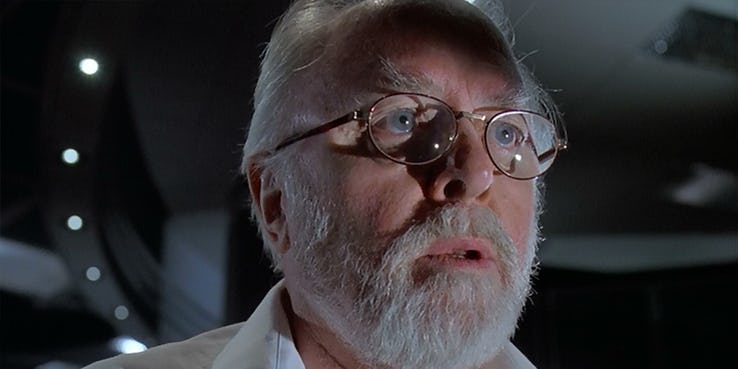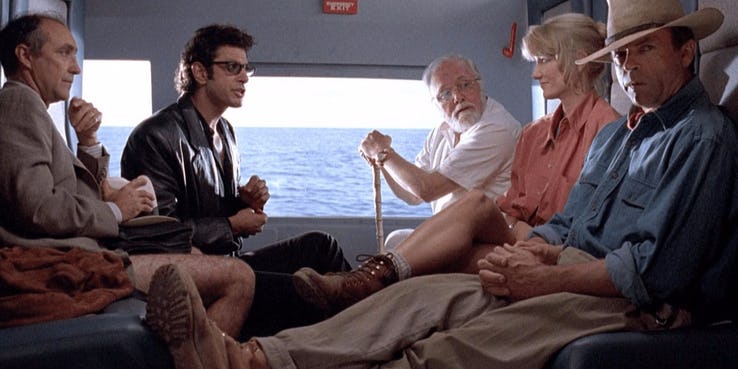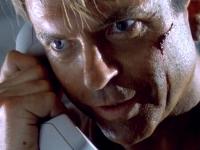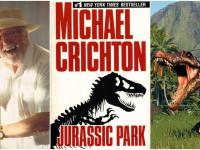Jurassic Park: 5 Things The Books Do Better Than The Movies (& 5 Things They Do Worse)

Michael Crichton continues to be one of the most prolific writers in the world, even years after his tragic death from lymphoma. His books have sold over 200 million copies worldwide, and over a dozen of them have been turned into films. One of his most popular series of books to also become a hit film franchise is Jurassic Park, centered around cloned dinosaurs running rogue in a theme park.
As with most book to film adaptations, there are plenty of differences. The books do a fantastic job of exploring the science around the creation of the dinosaurs in much greater detail, but they do a poor job of developing the human characters they terrorize, resulting in a loss of emotional connection. Certain aspects of the books will always be superior to the films, but others were altered for the better, successfully capturing the majesty, terror, and awe inherent to the franchise. Here are five things the books did better than the movies, and five things they did worse.
10 DO BETTER: ESTABLISH JOHN HAMMOND AS A VILLAIN

Though Lord Richard Attenborough did a tremendous job breathing life into the character of John Hammond, his depiction is completely at odds with the megalomaniac park owner in the book series. John Hammond is not a lovable, avuncular figure but a cynical, greedy man who puts profit above human life.
Steven Spielberg clearly wanted to bring more humanity to Hammond, giving all of his more negative traits to the character of Donald Gennaro, the “bloodsucking lawyer” that gets eaten whilst on the toilet by a T-Rex. This means Hammond, a man who wanted to play God, gets off easy for wanting to exploit his own creations.
9 DO WORSE: MAKE TIM THE HACKER

Most child actors fall into one of two categories; ridiculously cute and innocent, or precocious and mature for their age. The kids in Jurassic Park manage to be both, and offer some of the best scenes in it. In the novel, none only does much of their personality not come across, but their characteristics are inverted.
Instead of being the older sibling who’s a brilliant hacker, Lex Murphy is the younger sibling, and Tim is the kid who’s good with computers (though is still obsessed with dinosaurs). Switching their roles established a balance of competent female characters to male characters when combined with Dr. Ellie Sattler.
8 DO BETTER: KILL OFF JOHN HAMMOND

In the books, John Hammond is a greedy billionaire only interested in his theme park turning a profit, and no sooner are people dying on his island than he’s already drumming up plans to make a bigger, better one. He learns absolutely nothing from his mistakes, and in true Jurassic Park fashion, he gets his comeuppance for his hubris.
In the Jurassic Park novel, John Hammond dies in a suitably malicious way and doesn’t make it off the island as a survivor. He’s frightened by the recorded roar of a T-Rex, falls down a steep hillside and breaks his ankle, before being surrounded by compys who make quick work of him in his wounded state.
7 DO WORSE: CHARACTER DEVELOPMENT

The cast of the Jurassic Park films had a challenge on their hands when they committed to portraying Dr. Alan Grant, Dr. Ellie Sattler, Dr. Ian Malcolm, and company. Michael Crichton penned some fairly bland characters, leaving it up to the actors to give them personality and depth.
In the books, Dr. Alan Grant is simply “barrel-chested” with a beard, a rugged alpha male type who hates intellectuals and loved kids. Dr. Ellie Sattler is his 24 year old student, long-necked and blonde (who isn’t romantically involved with him), and Dr. Ian Malcolm is a droning egghead who speaks in monotone parables and has none of Jeff Goldblum’s charm.
6 DO BETTER: INTRODUCE HENRY WU MUCH EARLIER

In the Jurassic World movies, Head of Research and Cloning Dr. Henry Wu has emerged as a central antagonist with diabolical intentions. In some ways, he represents the archetype of John Hammond from the books, with little regard for human life in the pursuit of scientific breakthroughs.
In Jurassic Park he has little more than a cameo, whereas in the book he’s responsible for breaking down all of the intricate scientific jargon throughout. He’s given much more backstory, from his long career with Hammond, to the trial and error of their experiments, all of which would have been helpful context to have in the films.
5 DO WORSE: ACTION AND SUSPENSE

While no one can deny that Michael Crichton introduced some amazing concepts into the world of science fiction with his Jurassic Park books, they don’t always leap off the page. This is due to his dry prose, which favors long expository paragraphs of scientific jargon over action, suspense, and character development.
The films were much more suited as a medium for capturing the dramatic tension and suspense of visitors being trapped in a theme park full of roaming dinosaurs. Crichton’s writing could produce a clean, clear image of the action, while competent directors translated it from clinical and dull to exciting and dynamic.
4 DO BETTER: ROBERT MULDOON

Though he was a supporting character in Jurassic Park, Robert Muldoon had a much more expansive role in the books (yes plural!). In the film, the accomplished Game Warden from Kenya was responsible for all the dinosaurs in the park, particularly the velociraptors. He’s killed at the conclusion of the film (but not before saying his immortal line, "Clever Girl"), whereas in the books he survives by climbing into a pipe the raptors can’t get to.
Both versions of Muldoon are honestly epic; book Muldoon has a handlebar mustache, a rocket launcher, and an alcohol problem. Movie Muldoon has a British accent, a high intellect, and a great pair of legs. But the books did Muldoon right by letting him not only survive, but blow up raptors with a bazooka.
3 DO WORSE: FIND OUT THE DINOSAURS ARE BREEDING

Film is a medium that packs the same narrative punch visually as books do with the written word describing it. In the Jurassic Park novel, it’s Dr. Ian Malcom that discovers that the dinosaurs are breeding out in the park on their own, bringing it up to Hammond and the others while on the initial park tour.
In the film, it’s Dr. Alan Grant who discovers this because he happens upon a nest of recently hatched eggs while stranded in the park with Hammond’s grandchildren. The look on his face and terror in his eyes tell you all you need to know; the dinosaurs have taken control back from the humans, and now they’re multiplying.
2 DO BETTER: EXPLORE THE SCIENCE

Due to the nature of film, often pieces of core information have to be explored visually or expressed through a few lines of expository dialogue. This is to keep the pace moving, when large dumps of backstory or context would cause scenes to drag. It’s also why viewers may find themselves more confused, especially with some of the scientifically rich concepts found in Michael Crichton’s books.
If you’re keen on knowing more about the science he introduced in Jurassic Park, you’re better off reading his novels. He earned his medical degree from Harvard, and his books are often praised for their meticulous scientific research. Though the science in Jurassic Park is fictitious, it’s based on real principles.
1 DO WORSE: ALREADY HAVE THE DINOSAURS ESCAPING

Michael Crichton made the call in his Jurassic Park books to drop his readers right into the middle of the action, with the dinosaurs already having escaped from the park. This changes the tone of the books completely, certain plot points, and alters the way certain characters interact with each other.
In the first film, viewers are given plenty of time to get comfortable and marvel at the dinosaurs, reflecting the characters’ own awe before reflecting their terror when the dinosaurs go rogue. The film’s setup provides for a pretty great payout, with clear lessons being learned from the debacle by all the characters involved.
Source: https://screenrant.com








